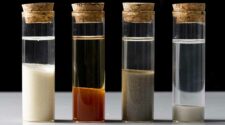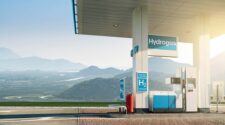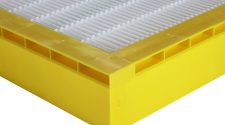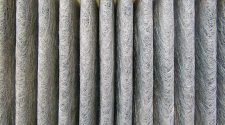The appearance of the specialty chemicals group LANXESS at the annual “Chemistry in Power Plants” conference of VGB PowerTech e. V. and the trade exhibition held in parallel from October 24 to 26, 2017 in Koblenz will focus on cost-efficient, tailor-made solutions for water treatment in power plants. LANXESS can offer its customers ion exchange resins and membrane elements for reverse osmosis from its own production facilities.
“An intelligent combination of these two technologies offers powerful solutions. Our longstanding experience gathered from numerous reference projects with our premium products from the Lewatit and Lewabrane series is the key to success. Our customers benefit from this whenever we deal with cooling water and water-steam cycles,” explained Jean-Marc Vesselle, head of the Liquid Purification Technologies (LPT) business unit of LANXESS.
Energy efficiency is the key
The new membrane elements of the Lewabrane RO ULP (Reverse Osmosis – Ultra Low Pressure) series will be the highlight at the LANXESS booth in Koblenz. They are designed for an operating pressure of 7.6 bar. Compared with standard elements, a 40 percent lower operating pressure is being applied, which results in significantly lower energy and thus lower operating costs. “The membrane with high water permeability and resulting high flow rates that we offer with Lewabrane RO ULP also makes an effective contribution to reducing the investment costs for water treatment,” states Alexander Scheffler, who is responsible for the LPT membrane business at LANXESS.
In addition, the ULP membrane is characterized by the highest hydrophilic surface of all Lewabrane types. This hydrophilicity contributes to the formation of a thin, protective water film on the membrane surface. As a result, the adsorption of organic substances to the membrane – i.e. organic fouling – is reduced.
In addition, the ASD feed spacers used in the membrane elements, which create space for the flowing water between the membrane surfaces, reduce fouling. In this “Alternating Strand Design” (ASD), filaments of different thicknesses are used. They lead to an even water overflow and thus counteract organic growth. This results in lower operating costs, as fewer cleaning chemicals are required and longer intervals between cleaning operations are possible.
Ion exchange and reverse osmosis hand in hand
The efficiency with which ion exchange resins and membrane elements from LANXESS can be used in combination has been proven for several years by the treatment of the boiler feed water for the large lignite-fired power plant Lippendorf near Leipzig in the Federal State of Saxony. The membrane elements of the Lewabrane RO B400 FR type used there are characterized by long service life, good permeate yield and salt retention along with low energy consumption. In addition, uncharged organic impurities are removed to a great extent, so that the TOC (Total Organic Carbon) value of up to 700 ppm in the raw water from an adjacent lake can be reduced to well below 0.01 percent. Typically, TOC values of about 20 ppb are achieved in the RO permeate, which is far below the VGB/EU standard or the recommendation of the U.S. Electric Power Research Institute of less than 100 ppb. The RO system produces up to 1,200 cubic meters of water per day for the water-steam cycle.
Also in Lippendorf, ion exchange resins from LANXESS’s Lewatit product range have been used to treat boiler feed water before and after reverse osmosis for around 15 years. Separate cation or anion exchangers are used in the demineralization stage, while fine cleaning after reverse osmosis is carried out with a mixed-bed exchanger. At the end of the treatment process, the conductivity of the boiler feed water is below 0.06 μS/cm.
Reliable design on a practical data basis
At the VGB conference, Uli Dölchow, application engineer at IAB Ionenaustauscher GmbH Bitterfeld in the LPT business unit of LANXESS, will give a lecture on October 26, 2017 entitled “Performance evaluation of RO membranes using statistical Design of Experiment (DoE) and a silica containing multi-ion mixed feed”. He explained how modern methods of statistical experimental design in the laboratory can be used to capture the behavior of membrane elements very realistically. Raw water test mixtures are used for this purpose, containing not only common salt but also other ions such as silicate, borate, nitrate and/or ammonia in order to reproduce typical operating conditions realistically. The membrane behavior can then be reliably predicted over a wide pH and temperature range. This enables a design that is precisely adapted to the respective application. “A system tailored to the requirements helps to reduce investment costs. In addition, rapid commissioning is possible without time-consuming readjustment. We can offer the power plant operator exactly the solution he needs,” explained Dölchow.
All the results of these laboratory tests are incorporated into the LewaPlus design software developed by LANXESS, which is constantly updated. This makes it an ideal tool, especially for the design of combined reverse osmosis/ion exchange systems for water treatment.
LANXESS offers a comprehensive range of specially tailored ion exchange resins and membrane elements for the above-mentioned and other applications. Detailed information is available on the website http://lpt.lanxess.com.









